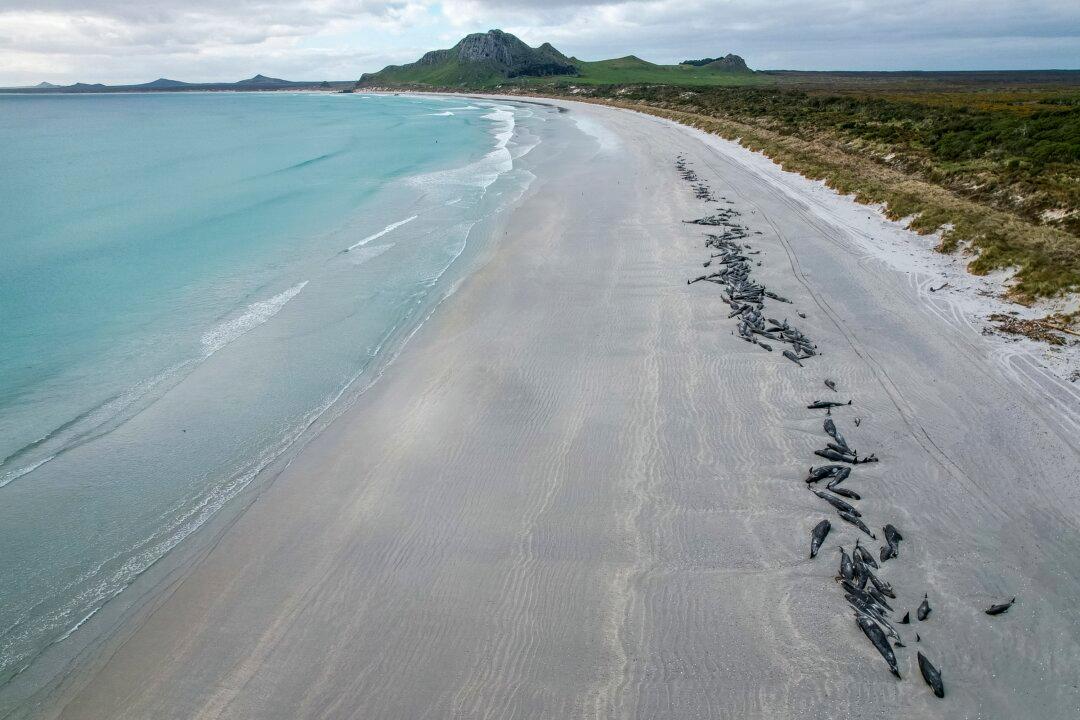Almost 500 pilot whales have become beached on New Zealand’s remote Chatham Islands over two mass strandings, with an expected survival rate of zero.
Project Jonah, which specialises in the protection and conservation of marine mammals, reported that a second mass stranding of about 250 pilot whales had occurred on Pitt Island on Oct. 10.





